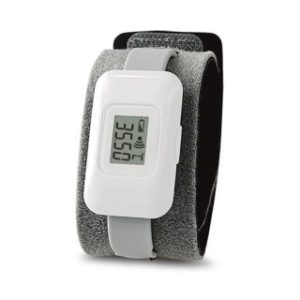How to choose a medical thermometer?
What technical characteristics should be taken into account when choosing a medical thermometer?
What are the differences between the measurement points?
Choosing the right medical thermometer
A medical thermometer is a medical device used to measure and display body temperature. This measurement can help diagnose when a patient has a fever, a symptom of many diseases or infections. There are different ways to take a patient’s temperature and several types of thermometers which will be presented in this guide.
How to choose a medical thermometer?
Several general criteria should be taken into account when purchasing a medical thermometer, such as the application; type of thermometer; patient comfort and hygiene; and safety conditions.
- Measurement points: Temperature measurement can be taken anally, orally, axillarily, by ear or by forehead. Depending on each case, one point of measurement will be chosen rather than another (see next question). Some thermometers are suitable for specific applications such as pediatrics.
- The type of thermometer: there are several types of medical thermometers which can be divided into two main groups: classic analog glass models and electronic models. Electronic thermometers can be either probe or infrared (non-contact).
- Comfort: thermometers can have flexible or rigid tips. Some are single-use or disposable to avoid contamination between patients. In pediatrics, the tips can be shaped like pacifiers to facilitate use on young patients. Non-contact thermometers offer increased comfort.
- Health and safety measures: Depending on the type and application, medical thermometers are required to comply with certain health and safety measures. For example, electronic non-contact infrared thermometers require no cleaning after use and are therefore safer for patients than analog ones.
What technical characteristics should be taken into account when choosing a medical thermometer?
When choosing a medical thermometer, several technical features come into play, such as display speed, accuracy, range and unit of measurement.
- Ease and speed of use: some electronic models offer a very fast response time. They also have digital display for simple and concise viewing. Infrared thermometers have an almost instantaneous reading speed.
- Accuracy and reliability: accuracy and reliability depend on the temperature measuring point used and compliance with the device’s instructions. Anal measurement remains the most reliable in terms of temperature accuracy.
- Versatility: some thermometers are versatile and can be used for several applications through the use of different tips.
- Temperature range: Temperature measuring ranges may vary depending on the model. They are generally between 35°C and 42°C.
- Units of measurement: Thermometers indicate the body temperature in degrees Fahrenheit (°F) or degrees Celsius (°C). In the United States, temperatures are measured in Fahrenheit and in most other countries in Celsius.
Why are conventional glass thermometers being used less and less?
Wuxi Medcare Instrument Co., Ltd. gallium thermometer
Analog glass thermometers can be used with an anal, oral or axillary measurement point. Once considered the standard, they are now used much less. There are several reasons for this.
First of all, the measurement which is indicated on a graduated axis is difficult to read and it takes several minutes to obtain the patient’s exact temperature. These thermometers can also break easily since they are made of glass and cannot be used orally under any circumstances on babies or young children.
Please note that mercury thermometers have almost entirely disappeared due to the toxicity of mercury. They have been replaced by models containing a mixture of gallium, tin and indium that expand in the thermometer when heated.
Why choose an electronic digital thermometer?
Medisana electronic infrared thermometer
These thermometers are popular because of their fast display speed and ease of use. Some models also have non-contact infrared technology.
- Display speed: electronic thermometers have a faster display speed than traditional analog glass models. Some anal thermometers offer a very fast digital display, around 20 seconds, which is an undeniable advantage when taking the temperature of an infant for example.
- Ease of use: electronic thermometers allow easy and clear reading of the measurement on a digital display. When the temperature is taken, an audible signal also indicates to the user that the temperature can be read.
- Non-contact infrared models: these thermometers allow remote temperature measurement without touching the patient’s body.
- Advantages: these models greatly limit the risk of contagion. They offer better hygiene and safety. They allow you to take a patient’s temperature without disturbing them. This is particularly useful when taking the temperature of a sleeping child, for example.
- Disadvantages: the temperature measurement is generally less reliable than analog or electronic models with contact because the measurement is taken “outside the body.” They are also more expensive.
What are the options available for medical thermometers?
TaiDoc Technology portable Bluetooth thermometer
There are two options that have become very popular for medical thermometers: talking models and connected models.
- “Talking” or “voice” thermometers: there are non-contact electronic thermometers that read the temperature in less than a second and have a voice function for blind and visually impaired people. This voice function can come in several languages.
- Connected thermometers: the thermometer has not been immune to the popular trend of “wearables“ and connected objects. Some models are now equipped with technology capable of continuous remote temperature control. These connected thermometers are particularly useful for monitoring the temperature of babies without waking them up or even going back into their room. These models generally come in the form of an adhesive patch which can be attached to different parts of the body (on the forehead, under the arm, etc.). The patch is connected to a smartphone application that receives data via Bluetooth.

